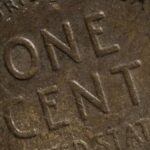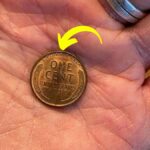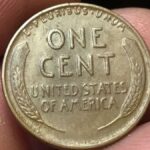Imagine finding a small coin in your pocket, only to realize it is worth an astonishing $1.4 billion! This might sound unbelievable, but the rare Lincoln Wheat Penny has captured the interest of collectors and coin enthusiasts worldwide. Some versions of this penny are still in circulation, making it a hidden treasure that anyone could discover.
What is the Lincoln Wheat Penny?
The Lincoln Wheat Penny was first introduced in 1909 by the United States Mint to celebrate the 100th birth anniversary of President Abraham Lincoln. It was designed by Victor D. Brenner, and its most recognizable feature is the two wheat stalks on the reverse side, which gave it the name “Wheat Penny.”
These pennies were minted until 1958, after which they were replaced by the Lincoln Memorial design. However, some rare variations of the Lincoln Wheat Penny have become incredibly valuable over time.
Why is This Penny So Valuable?
Several factors contribute to the extreme value of certain Lincoln Wheat Pennies:
- Rare Minting Errors – Some pennies were struck with mistakes, such as double-die errors, missing dates, or incorrect metal compositions.
- Limited Production – Some versions of the penny had very few copies made, making them rare and valuable.
- Historical Significance – Being one of the first coins to feature Abraham Lincoln, these pennies are highly sought after by collectors.
The $1.4 Billion Lincoln Wheat Penny
One of the rarest Lincoln Wheat Pennies has been valued at $1.4 billion, making it the most expensive penny ever. Though the exact details of this specific coin remain a mystery, many collectors believe it is a unique error coin or a prototype made from a different metal composition.
While the possibility of finding such a valuable penny is extremely rare, it is not impossible! There are still valuable Lincoln Wheat Pennies in circulation, waiting to be discovered.
Other Valuable Lincoln Wheat Pennies
Even if you don’t find the billion-dollar penny, there are still many valuable Wheat Pennies you might come across, including:
- 1943 Copper Lincoln Penny – Worth up to $1.7 million, this coin was accidentally struck in copper instead of steel.
- 1955 Double-Die Penny – Valued at $100,000, this coin has a noticeable double image due to a minting error.
- 1909-S VDB Penny – One of the rarest original Wheat Pennies, worth over $50,000.
How to Check If You Have a Valuable Penny
If you come across an old Lincoln Wheat Penny, here’s what you should do:
- Check the Year – The most valuable Wheat Pennies were minted between 1909 and 1958.
- Look for Mint Marks – Coins with an S (San Francisco Mint) or D (Denver Mint) are often more valuable.
- Search for Errors – Double-die markings, missing letters, or unusual colors may indicate a rare penny.
- Get It Appraised – If you believe you have a valuable penny, take it to a professional coin dealer for an evaluation.
Conclusion: Keep an Eye on Your Change!
The idea of a $1.4 billion penny still being in circulation is fascinating. While the chances of finding such a coin are slim, many valuable Lincoln Wheat Pennies are still out there. So, before you toss your loose change into a jar, take a closer look—you might just be holding a small fortune in your hands!
Disclaimer: The prices mentioned for rare coins, including the Lincoln Wheat Penny, are not guaranteed and may not be entirely accurate due to market fluctuations and varying appraisals.
Disclaimer: This article is written for informational purposes only. We do not guarantee its completeness or accuracy, please confirm with official sources.



